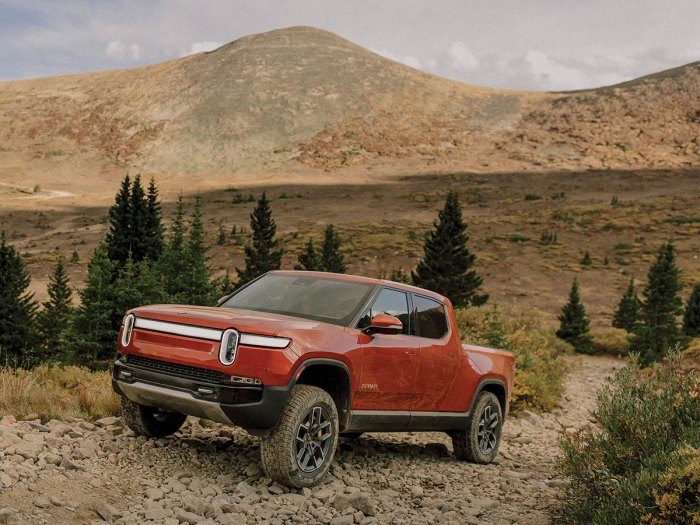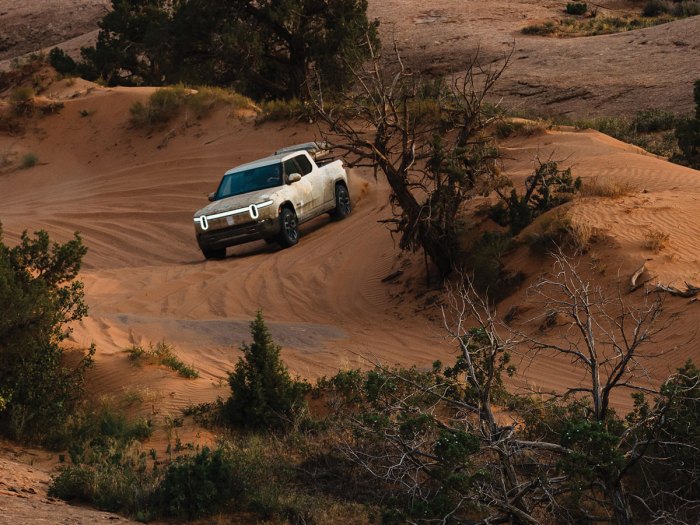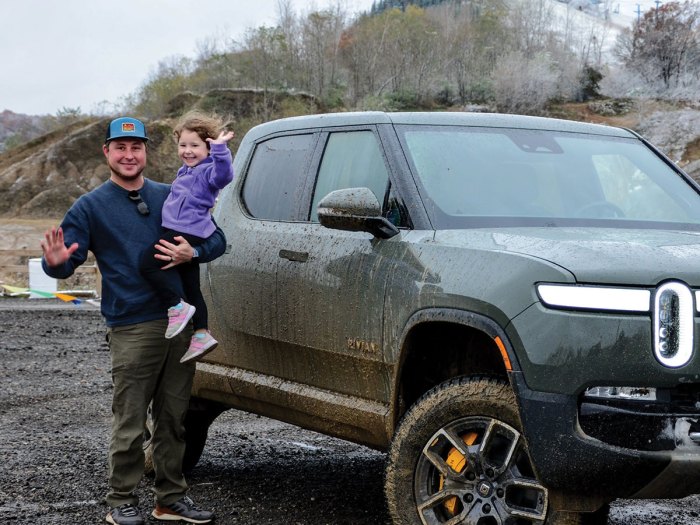Cool Jobs: These Eagle Scouts Are Helping Revolutionize the Car Industry

What do you want to be when you grow up? You’ve probably asked yourself that question. For auto engineers and designers, they ask it in their work: “What does this project want to be when it grows up?”
The Rivian R1T took 11 years to grow from an idea to an all-electric adventure truck powerful enough to tow 11,000 pounds, drive through 3 feet of water and speed up to 60 miles per hour in 3 seconds.
Guiding the project over the years were Eagle Scouts Mason Verbridge and Brian Gase.
“It’s the coolest thing I’ve ever owned — not just because I helped build it,” Gase says. “When you love the thing you made, it makes work more fun.”

The Rivian R1T electric adventure truck is capable of tackling many terrains.
SCOUTING THE RIGHT CAREER
When considering a career, Verbridge, who was raised on an apple farm in New York, saw mechanical engineering as a natural choice. His first internship was with Toyota.
“I was always tinkering with cars, and that really hasn’t stopped,” he says. “I love building stuff.”
Gase picked aerospace engineering with plans of getting a government or military job. Instead, he found a job with Ford after college.

Left: Brian Gase and his sons. Right: Mason Verbridge earned the Eagle Scout Award at 16.
Most automotive engineering positions require at least a bachelor’s degree in a science, technology, engineering or mathematics (STEM) field. Computer programming is also a valuable skill, Gase says.
Both men can credit other useful skills, like leadership, flexibility and responsibility, to Scouting.
“When I was the senior patrol leader, I was responsible for everything,” Gase says. “Working directly with adults and being the responsible Scout was a pretty rewarding opportunity.

Mason Verbridge holds his daughter next to a Rivian R1T.
REVVING UP WITH RIVIAN
Rivian began in 2009 with the goal of producing more sustainable, cleaner vehicles — an industry shift many carmakers are marching toward. Verbridge and Gase joined Rivian within a couple years of its launch.
Verbridge worked on the vehicles’ powertrain, fuel system and chassis, while Gase managed prototypes and helped build the company’s brand. When you start with a blank slate, it takes time to design, engineer and test a car.
“The fun part is when parts start showing up and you start building it,” Verbridge says.
In 2018, Rivian unveiled the R1T truck and R1S SUV, two electric vehicles designed for exploring the outdoors. A few years later, both vehicles hit the market.

INTO THE INDUSTRY
Whether working for a startup or for an established car manufacturer, auto engineers can wear many hats.
“On paper, you’re an engineer,” Verbridge says. “But on any given day, you could be asked to do anything.”
About 30,000 different parts make up an average car — that’s a lot to figure out. And in the electric vehicle market, there’s a lot to figure out as well. Electric vehicles accounted for nearly 6% of total car sales in 2022, and that number is trending upward. Some carmakers are making the transition to all-electric, like Rivian.
“Change is a big part of life,” Gase says. “You can end up on a better path.”
Job Facts: Automotive Engineer
WHAT TO EXPECT: Automotive engineers work on many components and products that go into vehicles. As technology improves, there is a growing demand for engineers to work on computer software for vehicles.
JOB OUTLOOK: More carmakers are prioritizing electric vehicles, and some brands are planning to switch their lineups partially by 2030 and completely by 2050. The global car market produces 60 million vehicles a year. The industry in the U.S. employs around 1 million people with even more in related fields.
EDUCATION/TRAINING: Most automotive engineering positions will require at least a bachelor’s degree, while a technician job calls for an associate’s degree. Many engineers pursue master’s degrees to gain specialization.
SALARY: Annual salaries, depending on education and experience, can range from $70,000 to $100,000.
Leave a Comment